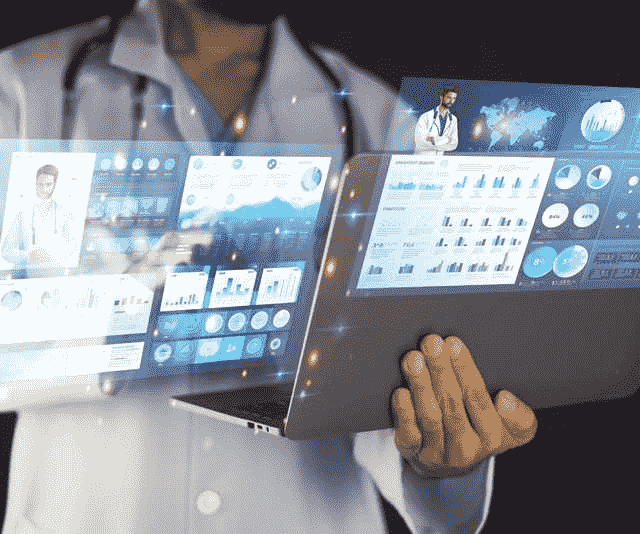It is impossible to overestimate the significance of effective and user-friendly patient appointment software in the dynamic world of healthcare. As time progresses, more and more healthcare providers are realizing the importance of strong appointment management systems that improve patient satisfaction while also streamlining administrative duties.
It might be difficult to determine which of the many options on the market have the essential characteristics that actually matter. To help your clinic stay on top of the game, we’ll go over the top five features to look for in patient appointment software.
1. Automated Appointment Scheduling and Reminders
Why It Matters
Automation is becoming a need in the hectic healthcare industry of today, not a luxury. Automated appointment scheduling and reminders can help your staff handle administrative tasks much more efficiently. Moreover, it decreases the number of no-shows, and increase patient satisfaction.
With the use of this function, patients can make, change, or cancel appointments whenever it’s most convenient for them, without requiring human assistance.
Key Benefits
- Reduced No-Shows: You can significantly lower the amount of missed appointments by setting up automated reminders to be delivered by email, SMS, or even an app. To make sure they are ready for their appointment, patients receive regular reminders that may also include pre-appointment instructions.
- 24/7 Accessibility: It is incredibly convenient for patients to make appointments at any time and from any location, especially for those with hectic schedules.
- Staff Efficiency: Your administrative personnel will be more productive overall if you automate the scheduling process so they may concentrate on other important duties.
What to Look For
Make sure that the automation feature may be customized while assessing appointment scheduling software. Seek features that let you customize the reminder’s frequency and format, and make sure it works well with the systems you already have in place.
2. Telehealth Integration
Why It Matters
Telehealth service uptake has risen due to the COVID-19 epidemic, and this trend is here to stay. It is essential to have telehealth integrated into your appointment software in order to provide patients with comprehensive care, especially those who are unable to physically attend the clinic.
With the help of this function, you may organize follow-ups, conduct virtual consultations, and even remotely administer medication.
Key Benefits
- Expanded Reach: Telehealth enables you to treat patients from a variety of locales, including underserved or rural ones, by removing geographical restrictions.
- Convenience: For minor illnesses or routine follow-ups, patients particularly value being able to consult with their healthcare professional from the comfort of their homes.
- Continuity of Care: Even in circumstances where in-person visits are not feasible, telehealth guarantees that care is not stopped.
What to Look For
Choose a software that provides a safe and HIPAA-compliant platform for telemedicine. Make sure it can integrate with your Electronic Health Records (EHR) system for easy documentation, and that it allows text, audio, and video consultations.
3. Patient Portal Access
Why It Matters
A key component of patient-centered care is giving individuals access to their medical records. Your doctor-patient relationship can be strengthened and patient engagement and communication increased with a feature-rich patient portal integrated into your appointment software.
Key Benefits
- Self-Service: Through the site, patients can examine their test results, medical history, upcoming appointments, and even pay expenses. Patients and staff will save time when fewer phone calls and in-person visits are required thanks to this degree of access.
- Improved Communication: Patients can ask questions and receive prompt answers from their healthcare providers directly through the secure messaging feature of the site.
- Patient Engagement: Better results result from patients being more proactive about their health when they have simple access to their medical records.
What to Look For
Make sure your practice’s EHR system is properly connected with the patient portal, and that it is easy to use and responsive on mobile devices.
To give a complete patient experience, look for features like appointment scheduling, medicine refill requests, and secure messaging.
4. Data Analytics and Reporting
Why It Matters
Having access to robust analytics and reporting tools is crucial for the expansion and effectiveness of your firm in the era of data-driven decision-making. Moreover, you may make wise judgments and streamline your operations with appointment software that provides in-depth insights into staff performance, appointment trends, and patient behavior.
Key Benefits
- Identify Trends: By analyzing data on appointment types, patient demographics, and no-show rates, you can identify patterns and make necessary adjustments to improve efficiency.
- Performance Tracking: Monitor the performance of your staff, including the number of appointments handled, average consultation time, and patient satisfaction scores.
- Financial Insights: Generate reports on revenue, billing, and insurance claims, helping you keep track of your practice’s financial health.
What to Look For
Choose software that offers customizable reports and dashboards, allowing you to focus on the metrics that matter most to your practice. Look for options integrating with your billing and EHR systems to provide a holistic view of your operations.
5. Security and Compliance
Why It Matters
In the healthcare industry, safeguarding patient data is of utmost importance. Your appointment software must comply with industry regulations like HIPAA. It helps to protect patient information against unauthorized access and breaches.
Key Benefits
- Patient Trust: Patients are more likely to trust a practice that prioritizes the security of their personal and medical information.
- Legal Compliance: Avoid hefty fines and legal issues by ensuring that your software meets all regulatory requirements for data protection.
- Business Continuity: In the event of a data breach, having robust security measures in place can minimize damage and ensure continuity of operations.
What to Look For
Ensure that the software provides encryption for data both at rest and in transit. Look for features like multi-factor authentication, regular security audits, and compliance certifications. Additionally, consider software that offers disaster recovery and backup solutions to protect against data loss.
Conclusion
As healthcare continues to evolve, investing in the right patient appointment software is crucial for the success of your practice. The features discussed—automated scheduling, telehealth integration, patient portal access, data analytics, and security—are essential for providing high-quality care and ensuring the efficiency of your operations.
By choosing software that incorporates these features, you can enhance patient satisfaction, streamline administrative tasks, and stay ahead in a competitive market.
Ready to transform your practice with cutting-edge patient appointment software? Explore our top-rated solutions today and take the first step towards a more efficient, patient-centered healthcare experience.
FAQs
Q1. What is the most important feature in patient appointment software?
The most important feature can vary depending on your practice’s needs, but automated scheduling and reminders are crucial for reducing no-shows and improving patient satisfaction.
Q2. How does telehealth integration benefit my practice?
Telehealth integration allows you to offer virtual consultations, expanding your reach to patients in remote areas. It provides convenient care options, especially for follow-ups and minor ailments.
Q3. Is patient data safe with appointment software?
Yes, as long as the software is HIPAA-compliant and employs robust security measures like encryption, multi-factor authentication, and regular security audits, patient data will be well-protected.
Q4. Can appointment software help in reducing administrative workload?
Absolutely! Features like automated scheduling, reminders, and a patient portal. Significantly reduce the time your staff spends on administrative tasks, allowing them to focus on more critical areas of patient care.
Q5. What should I consider when choosing patient appointment software?
Look for features that align with your practice’s needs, such as automated scheduling, telehealth, patient portal access, data analytics, and strong security measures. Additionally, ensure that the software integrates seamlessly with your existing systems like EHR and billing.




